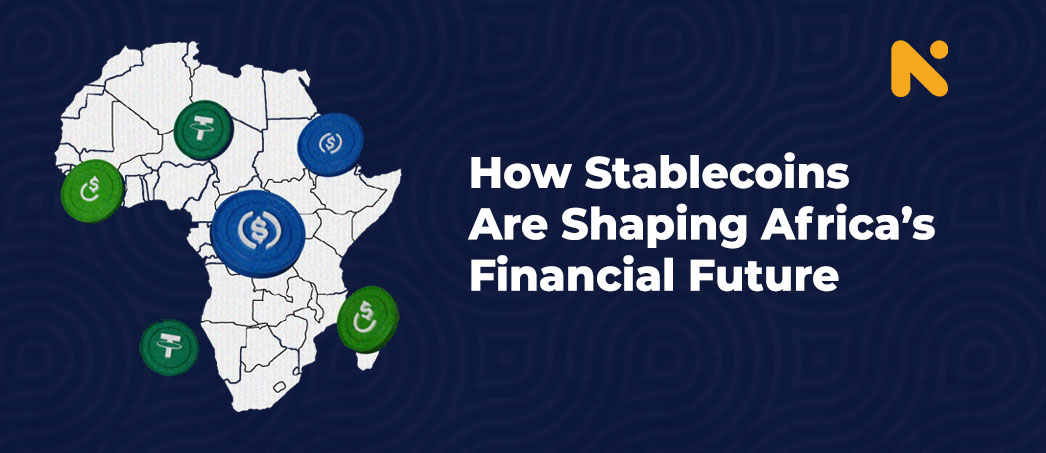Layer 2 Scaling and How Presto Makes It Easy
Blockchain technology has the potential to change...


In many parts of Africa, money doesn't always move the way it should. Inflation eats away at savings, sending money across borders is expensive and slow, and millions of people still don’t have access to a formal bank account. As many African economies grapple with these challenges, stablecoins are emerging as a powerful force for financial inclusion, not led by governments or traditional banks, but by technology.
Unlike traditional cryptocurrencies like Bitcoin or Ethereum, which are notoriously volatile, stablecoins are digital currencies pegged to stable assets, such as the US dollar, the Euro, or even commodities like gold. That simple feature, stability, is unlocking a wave of financial innovation across the continent.
What Are Stablecoins and How Do They Work?
Before we explore how stablecoins are transforming finance in Africa, it’s helpful to understand what they are and the different forms they come in. At their core, stablecoins are cryptocurrencies designed to maintain a stable value, usually by being backed or pegged to a reserve asset. There are four major types of stablecoins, each with different models and mechanisms:
With this context, it becomes clearer why stablecoins are gaining traction across Africa. They offer different flavors of stability, depending on the need, whether it’s preserving value, making payments, or avoiding banking red tape.
Why Stablecoins Matter in Africa
1. Combatting Inflation and Currency Devaluation
In countries like Zimbabwe, Uganda, and South Sudan, double-digit inflation erodes the value of savings at alarming rates. Local currencies lose purchasing power overnight, undermining economic stability.
Stablecoins, especially those pegged to strong global currencies like the US dollar (e.g., USDT, USDC), offer a hedge against inflation. Africans can preserve value in stable assets, bypassing unreliable fiat systems without relying on traditional banking infrastructure.
2. Facilitating Remittances and Cross-Border Payments
Africa receives over $50 billion annually in remittances, but the costs of sending money home remain among the highest in the world, with fees ranging from 7% to 20%.
Stablecoins dramatically reduce these costs by eliminating intermediaries and enabling instant, borderless transfers. Whether a Ugandan working in Dubai or a Ghanaian freelancer earning from abroad, stablecoins offer cheaper, faster, and censorship-resistant alternatives to traditional remittance channels.
3. Powering the Rise of Digital Entrepreneurship
Africa’s gig economy, e-commerce, and Web3 adoption are growing rapidly. Yet many creators, developers, and businesses still face challenges accessing global payments due to currency controls or lack of compatible banking systems.
By leveraging stablecoins, African freelancers can get paid instantly in dollars, startups can tap into global markets without needing a US bank account, and local collectives can manage community funds transparently across borders.
4. Driving Financial Inclusion for the Unbanked
Over 57% of African adults remain unbanked, according to the World Bank. For many, stablecoins, accessible through a mobile wallet, represent their first entry into digital finance.
With just a smartphone and internet connection, users can hold, send, save, and spend stablecoins without ever stepping into a bank, giving them access to financial tools previously out of reach.
Who’s Leading the Stablecoin Charge in Africa?
The stablecoin ecosystem in Africa is expanding rapidly, supported by a mix of local startups, global exchanges, and protocol builders that see long-term opportunity in solving African financial challenges.
Binance and Yellow Card have played major roles in onboarding users to dollar-pegged stablecoins such as USDT and BUSD through mobile-friendly peer-to-peer markets. In West Africa, Fonbnk enables people to convert airtime into stable digital currencies, particularly helpful in low-liquidity markets.
Meanwhile, Eversend is developing a stablecoin-driven remittance and payment platform. Kotani Pay is addressing access issues by enabling stablecoin transactions via USSD for those without smartphones or internet access.
From the protocol layer, Celo has made Africa a strategic priority, with its mobile-first blockchain and cUSD stablecoin designed for micro-transactions and day-to-day use. Reserve Protocol is exploring stablecoin baskets that hedge against volatility, already being tested in Nigerian markets.
These players and many others are building the pipes and products that make stablecoins not only accessible but also usable in everyday African life.
Africa’s Stablecoin Moment: What Comes Next?
As stablecoins continue to gain traction across the continent, their evolution is expected to accelerate, fueled by Africa’s dynamic blend of digital readiness, youthful population, and a deep-rooted need for financial alternatives. What began as a speculative interest in crypto is now maturing into a more grounded movement, one centered around utility, empowerment, and economic opportunity.
The African stablecoin ecosystem is no longer on the sidelines; it is taking center stage. Whether through remittances sent in seconds, salaries received without delays, or inflation-resistant savings accounts, stablecoins are enabling real-world impact today. They are not just reshaping how Africans think about money; they are reshaping how Africans use it, store it, and build with it.
This is more than a trend. It’s a movement rooted in necessity, powered by innovation, and driven by people who are ready to build a financial future that works on their terms.
Tell us about your idea, and we’ll offer the most fitting technological solution.